|
September Expected additions to the list in September included Swinhoe’s Snipe, Pallas’s Grasshopper Warbler, Yellow-rumped Flycatcher and Dark-sided Flycatcher. But September is also the month when a handful of rare and difficult migrants are possible. The key site here is the wooded parkland at Ho Man Tin which, mainly through the efforts of John Chow, has become identified as an oasis for migrants in urban Kowloon. I was in luck. There, I saw Brown-chested Jungle Flycatcher on 2nd, Tiger shrike on 11th (and again on 15th), Siberian Blue Robin on 14th, and Fairy Pitta on 16th. By the end of the month, I was on 341 species. October Sometimes it began to feel that other birders were easily seeing species that I was having difficulty with. There was an obvious passage of Crested Honey Buzzards towards the end of October – it seemed as though you only had to look up to see one flying over – yet I never connected with one. Sakhalin Leaf Warbler was also proving difficult for me. Every ground-haunting Phylloscopus that I recorded on my iPhone – including one at Mai Po that I was convinced was Sakhalin – turned out to be Pale-legged once I generated a sonogram back home on the computer. There was a sense of diminishing returns for the effort involved. I was starting to feel burnt-out. I forced myself to get back out into the field. In truth, October 2020 was below average in terms of passage through the territory. But as this is Hong Kong, there were still new birds to be added to the list. Species I expected to see were Japanese Quail, Pied Harrier, Black-capped Kingfisher, Amur Falcon, Lanceolated Warbler, Sulphur-breasted Warbler, Eurasian Skylark and Chestnut-eared Bunting. Best birds were a Pale-footed Bush Warbler that I found at Wo Hop Shek – a local patch that had proved poor for most of the autumn, Taiga Bean Geese and Styan’s Grashopper Warbler at Mai Po, and House Sparrow at Lok Ma Chau Village. I also notched up Middendorf’s Grasshopper Warbler and Ruddy-breasted Crake at Telford Gardens in a small area of flower beds in the middle of high rises, a shopping mall and an MTR station. And I finally connected with a Sakhalin Leaf Warbler in the mosquito-infested copse at Ho Sheung Heung just across the river from Long Valley on 24th. At the end of October, my total was 356; I had passed Graham’s record. November I aimed for 360, which became 370, and then 380 – numbers far beyond my original expectations. And this was because, after a disappointing October, November proved to be a great month for birds. I saw five species I had never seen in Hong Kong before. The first was a Greenish Warbler at Luk Keng on 2nd (found by John Allcock on 1st), followed by Japanese Reed Bunting on 13th (found by Chris Wu and Tom Lam), Chinese Leaf Warbler at Tai Po Kau on 17th (found by Roman Lo on 16th), Rosy Starling at San Tin on 25th, and Thick-billed Warbler at Lok Ma Chau Village on 26th (one of two found by Paul Leader on 25th). Additional species were a Rosy Pipit at Long Valley found by Matt Kwan on the afternoon of 4th in the same field as he had had one in 2017; I saw it briefly on the following morning thanks to Roman Lo. One of the birds that had been eluding me, even though everyone else seemed to be seeing it with little problem, was Brambling. It had been seen regularly at Po Toi in the past week and a half, so I took the ferry to the island on 12th. It was hot and quiet bird-wise, but did turn up a late Black Baza hawking over the helipad area on three to four occasions, which was an unexpected addition to the list. I finally caught up with Brambling – two in a tree at Long Valley on 14th - after receiving a message from Peter Wong. Other additions included Greater White-fronted Goose, Mandarin Duck and Oriental Stork. By the end of a very productive month, I was on 377 species. December December often becomes rather static in terms of bird movement, but can turn up the odd rarity. The 1st saw me off to Po Toi to look for an Ancient Murrelet that had been found in the harbour by Morten Lisse and his son Ben on 28 November. The ferry was packed with hikers and fishermen, and also about 50 photographers in search of the murrelet. The bird was still present and proved an easy tick. The land was pretty quiet – it had not been a good autumn season for the island and there was little else to be found. However, Matt Kwan heard and saw a Red-breasted Flycatcher in a tree adjacent to the small café at the pier. This bird was on my hit-list. By the time I heard about this, it had disappeared and remained impossible to find. Fortunately, thanks to Graham, we managed to relocate the bird high in a nearby tree not long before the return ferry left the island, bringing me up to 379. The wished for 380 was the resident White-browed Laughingthrush (Cat. IIB) at a site near Tai Po on 5th. On 8th, an Alström's Warbler was found in Tai Po Kau. (A ring on its leg indicated that it had been present since at least 12 November when it was trapped.) I had looked for this species at two different sites where it had been seen in recent weeks, but had both times drawn a blank. I went to Tai Po Kau on 9th, and the bird was seen by others and I glimpsed it in a bird wave but insufficiently to count it. I went back on 10th and this time managed to see it well enough thanks to Morten Lisse. There were two other birds on my hit-list – Chestnut-flanked White-eye and Baikal Teal. Several of the former and two of the latter had been reported in recent days. I got the white-eye at Tai Lam CP on 11th, after looking at more than enough Swinhoe’s White-eyes than I care to think about. An adult male Baikal Teal had been seen off the Mai Po boardwalk, and a 1st-winter male had also been recorded at pond 11 on the main reserve. On 14th I spent the high tide period looking at the ducks out in Deep Bay but couldn’t find the teal amongst the hundreds of Eurasian Wigeons out there. I then walked back to pond 11 to have a second look for the 1st-winter, which hadn’t been there when I’d looked on my way out to the mudflats. By chance, I met Graham and Peter Wong in the hide and we scanned through the ducks to no avail. Graham and I left. We were nearly back at the car park when Peter rode up on a bicycle and told us the 1st-winter male had flown in after we had left, so we hauled ourselves back to pond 11 and – thanks to Peter - I added another species to my list, bringing me to 383. The final two birds of the year were real rarities – Grey-backed Shrike (fourth Hong Kong record) at Lam Tsuen, which I saw on 15 December and Eurasian Oystercatcher (sixth Hong Kong record) at Pak Nai. I saw the latter on 22 December, which brought me to the final total of 385. At the end of his article about his Big Year in 2006, Graham suggested that a total of 365 was a real possibility. That I achieved twenty more than that still surprises me, but we live in different times. I think the main reason I could see so many species, is the increase in communication owing to mobile phones – nowadays, bird news on WhatsApp is virtually instantaneous. There are now also more birders out in the field, several of them on a daily basis.
Throughout this blog, I have mentioned a number of people who found birds and passed on information. I should add Dylan Thomas, Mike Leven, Peter Ho, Benjiman Li and Akshat Khirwal to those already mentioned and apologise for anyone I have inadvertently omitted. I owe special thanks to Roman Lo, Peter Wong and Graham Talbot for their support, particularly during the final months of the year; my list would have been smaller without their input. Towards the end of the year, people were joking about me reaching a total of 400. This was clearly beyond me, but I believe that it is a distinct possibility in the future. The person who takes on that challenge needs a good birding year, stamina, time, persistence and a certain amount of luck. Someone youthful, I imagine. It won’t be me!
0 Comments
May
I picked up a small number of good birds during this month. Resident Category IIB species included Vinous-throated Parrotbill on top of Tai Mo Shan, and breeding Chestnut-tailed Starlings in Kowloon Tsai Park (with thanks to Lo Chun Fai for directions to the starlings). I went to Po Toi on 12 May to look for the Roseate Terns that nest with Bridled and Black-naped Terns on Castle Rock near the island. The Roseates don’t usually arrive until May and I spent some time near the Tin Hau temple watching several fishing at the entrance to the harbour. Elsewhere, I also managed to connect with two other summer visitors – a Lesser Cuckoo heard at Tai Po Kau on 15 May (later seen at Mai Po on 22 May) and a Malayan Night Heron near Tai Tong shortly after dawn on 14 May. Most unexpected was a Common Cuckoo found by Peter and Michelle Wong at Mai Po on 20 May – only the second record for Hong Kong; this bird was vocal which made identification straightforward. The final hoped-for bird of the month was a Cotton Pygmy Goose found at Mai Po on 28th by Banson Leung. June and July These are the dead months bird-wise in Hong Kong. I managed to add two species in June – Slaty-breasted Rail at Mai Po on 4th, and Common Emerald Dove at Hok Tau on 12th. July was slightly more productive and brought four new species for the list – three of them not entirely unexpected (Black-winged Kite, Eurasian Hobby and Brown-breasted Flycatcher) but one totally off the radar. This was a Ryukyu Scops Owl near Sheung Shui. This bird had first been heard briefly by John Holmes back in May but had remained unidentified. It was heard again, and also seen by John on 25th July, and eventually pinned down as a Ryukyu Scops Owl, apparently of the Lanyu subspecies, by John Allcock. I saw the bird on 28th. Quite how this island scops owl ended up inland in southern China is a matter of conjecture - and it is up to the HKBWS Records Committee to decide on its status - but for the moment it remains on my Big Year list! August And at last, in the final week of the month, the start of autumn migration. I picked up expected Eastern Crowned Warbler and Amur Paradise Flycatcher. I also headed out to the Cheung Sha Wan Wholesale Food Market in urban Nam Cheong on the advice of Carrie Ma to add House Crow (Category IIB) to the list – this is not a species that you come across casually. I added six species in total during the month. 385 species recorded There is not a strong emphasis on the Big Year in Hong Kong. The two cases I am aware of involve Richard Lewthwaite who saw 328 species in 1995 and Graham Talbot’s record of 350 species in 2006 - see Graham's account in HKBWS Bullletin number 207, Spring 2008 at: https://www.hkbws.org.hk/cms/en/resource/publication/bulletin?start=40 . I am not a great twitcher or lister. Even now, it surprises me that I began a Big Year in the first place and, perhaps more so, that I managed to see it through to the end of December. I certainly didn’t begin 2020 with a definite commitment to record as many birds in Hong Kong as I could during the year. I lead guided birding tours for foreign birders visiting or passing through Hong Kong. I had several bookings in January, which proceeded without a hitch but then in late January the coronavirus pandemic began and my guided birding outings came to an abrupt halt. Once the coronavirus interrupted our lives, I decided I needed a focus to keep me going during the year. A Big Year became a personal challenge and Graham’s tally of 350 seemed a good figure to aim for. Unsure of what the exact rules were (if there are any!), I decided to limit the birds I could count to species in Category I, IIA & IIB only. I included heard-only species, although tried to limit these as much as possible. I still ended up, somewhat unsatisfactorily, with five heard-only species but I console myself with the fact that they are all of birds I’ve seen previously in Hong Kong and they are all valid records in terms of the Hong Kong Bird Report. A full list of the 385 species can be found here. January I can't remember exactly when I decided to commit to the Big Year, but it must have been around 23 January when I twitched a female Fire-capped Tit at Kadoorie Farm. I had seen the first for Hong Kong in January 2019 – at the same site; in fact, in the same tree – and had also seen a few in Sichuan in summer 2019, so I would not normally have made the effort to see it again. However, it must have been on my mind that it was an excellent bird for the year list, and not to be passed up lightly. In terms of a Big Year in Hong Kong, January is the time when you’re going to record the greatest number of species for the list in a single month. Graham scored 181 in 2006; I managed 183. These naturally included a good spread of common resident and wintering species, but there were also some scarce/rare species – the kind of species which are the bread-and-butter of a Big Year if you’re going to come up with a respectable total. The autumn/winter of 2019 had been particularly good for rarities and some of these lingered into 2020. Thus, I got Chinese Grey Shrike, Rufous-faced Warbler and Kloss’s Leaf Warbler on the list, as well as other species – Northern Lapwing, Bull-headed Shrike, Asian House Martin, Forest Wagtail, White-spectacled Warbler, Mrs Gould’s Sunbird, Common Rosefinch and Crested Bunting – which although more-or-less annual, are not necessarily guaranteed. February I added 35 new species to the list in February; many of these were scarce birds that I realized I might not come across again in future months. Mai Po turned up Falcated Duck, Gadwall, Mallard and Greater Scaup– all ducks which used to be commoner than they now are. I also had Mew (Kamchatka) and Slaty-backed Gulls from the Mai Po boardwalk. Best, however, were wintering forest birds – Fujian Niltava at Lau Shui Heung, and Collared Owlet, Hill Blue Flycatcher and Chestnut-crowned Warbler at Tai Po Kau. It was Tai Lam Country Park, however, that came up trumps. I saw a female Small Niltava there on 6 February. Doing a Big Year inevitably brings days that linger in the memory; 17 February proved to be one of those days. On the trail from Kap Lung to Ho Pui in Tai Lam CP, near the narrow head of a forested stream known colloquially among birders as the “magic valley”, I saw Japanese Robin, Rufous-gorgeted Flycatcher and a roosting Collared Scops Owl, all in the same general area. I knew that the first two were wintering there, but the owl was a surprise; although common in Hong Kong, the species is easy to hear but not at all easy to see. Other good additions to the list in February included Radde’s Warbler, Black-headed Bunting and Red-headed Bunting at Long Valley, and a much-photographed Eyebrowed Thrush at Yuen Long Park. March to April
The good winter records extended into early March before spring migration properly began. On 2nd, from the Mai Po boardwalk, I relocated a Common Shelduck that had been seen flying over the main reserve on 26 February by John Allcock. This species was not on my hit-list. It used to be very common out in Deep Bay (highest count 4011 on 17 Jan 1988) but had undergone a rapid decline after the turn of the century; there had been no sightings since 2013. Other good sightings in early March included a flock of Grey-capped Greenfinches on the dam at Tai Mei Tuk, a Long-billed Dowitcher at Mai Po, and a party of Eurasian Siskins at Shek Kong. Spring migration commenced in the second part of the month. There are three key sites to cover at this time of the year for anyone doing a Big Year. The first, of course, is Mai Po which is a key site for all of the year but is essential in spring for passage shorebirds. The second place is Po Toi. The third is the waters south of Hong Kong for a number of migrant seabirds. To take each of these in turn, Mai Po turned up the expected spring waders including Asian Dowitcher, Sharp-tailed Sandpiper, Little Stint and Sanderling. One wader that birders always hope to see but one that is not guaranteed is the enigmatic Spoon-billed Sandpiper. Although still annual (just) at Mai Po in spring, it can be elusive; I had not seen it in 2019. Fortunately, this year was better than most; at least two birds were present between 7 & 13 April (for more details see https://www.birdinghongkong.com/april-2020.html), one of which was a headstarted bird. Many birders, myself included, were able to get decent views especially on the scrape at high tide. Other good birds at Mai Po included Chinese Egret, Blue-tailed Bee-eater and a male Japanese Paradise Flycatcher. The island of Po Toi is the best site to look for certain spring migrants that can be hard to find elsewhere in Hong Kong. Fortunately, the ferries continued to run to the island in spite of the coronavirus. I visited the island eleven times between and 19 March and 26 April. Highlights included Chinese Sparrowhawk, Oriental Cuckoo, Swinhoe’s Minivet, Chestnut-cheeked Starling, and a number of flycatchers (Blue-and-white, Ferruginous, Narcissus and Grey-streaked). Best, however, was a Goldcrest – a first for Hong Kong - that I was lucky enough to find on 31 March. Chartered boat trips into southern waters from Aberdeen are now a part of the ornithological calendar in Hong Kong. They are arranged by Carrie Ma and, although rather hit-and-miss in what they turn up, they are really the only means of seeing certain marine species in Hong Kong. I went on one trip in March, and two in April and managed to see eight species that I would not otherwise have seen. These were Greater Crested Tern, Common Tern, Aleutian Tern, Pomarine Skua, Parasitic Jaeger, Streaked Shearwater and Short-tailed Shearwater, all of which are regular in spring. A bonus on 30 April was a Brown Booby which flew past the boat as we were heading back to Aberdeen. This was the 13th record for the territory, and a Hong Kong first for me. I had other good birds in spring away from these main sites. At the end of March, the ridge road in Tai Lam CP that leads from Route Twisk to Tai Lam Reservoir is a potential site for raptors and needletail swifts. On 27 March, I was fortunate enough to connect with two Silver-backed Needletails there. In addition, I found a Common Swift at Long Valley on 3 April and watched it feeding low over one of the ponds for half an hour. I also found a Glossy Ibis at Lut Chau on 9 April. I also made a concerted effort to connect with Chinese Grassbird this year, a species I hadn’t seen for a few years in spite of searching for it in suitable habitat at Tai Mo Shan. This year I tried a different tack and on 18 April walked up the steepish steps to Ping Fung Shan from Hok Tau. Richard Lewthwaite had had this species as well as Upland Pipit here in May 2017 during a breeding survey. I found both species and had good views of a pair of Chinese Grassbirds, as well as another bird on territory. I heard Upland Pipit singing high up on a hillside but unfortunately failed to see it. I was also rewarded with two White-throated Needletails whooshing low over my head. I added 43 species in March and 49 in April, which left me with a total of 310 species. This was 80.5% of my overall total of 385. On 29th July, we visited Sunshine Meadows, an alpine area 2159 metres asl a few miles west of Banff. The meadows are accessed by cable-car and at the top there are a number of possible hikes. We walked a seven km circular trail, taking in Rock Isle Lake and Monarch Viewpoint. As in all of the places we’d visited since leaving Red Deer, bird density was relatively low but we did encounter a number of interesting species including Mountain Bluebird, White-crowned Sparrow, Gray-crowned Rosy-finch, Clark’s Nutcracker, American Pipit, Hermit Thrush, Mountain Chickadee and Boreal Chickadee. From a rise, I also picked out two Greater Yellowlegs feeding on a distant, inaccessible muddy pool. The next day, we checked out of our hotel and drove back to Calgary, stopping at the small town of Canmore, 25 km from Banff, en route. This is another town where there are streams, small woods and attractive gardens within a stone’s throw of the centre. Birds I added to the trip list were d Fox Sparrow and Western Tanager.
Back in Calgary later that afternoon, I walked out from our hotel in the environs of the airport to check out a couple of nearby roadside ponds. One pool held a pair of Horned Grebes with a tiny chick, and a juvenile American Coot. Another pond had several Lesser Scaups and a Redhead. Our onward flight to the UK on 31st July was not until the early evening, so we spent a couple of hours at Inglewood Bird Sanctuary in the morning. Situated besides the Bow River near the centre of the city, this reserve boasts 270 species of birds, 21 species of mammals and 347 species of plants. It was a very pleasant place to wonder around. Small pools held Mallards, Wood Ducks and Common Goldeneyes. The river itself produced 40+ Ring-billed Gulls, several Californian Gulls and five Franklin’s Gulls along with a few Double-crested Cormorants and a Common Merganser. Overhead, we saw a Red-tailed Hawk, two Swainson’s Hawks and three Ospreys. Smaller birds included a family party of Eastern Kingbirds and several Northern Rough-winged Swallows perching in dead trees. A female Mule Deer fed in the area along with two fawns. On 26 July, we drove west into the Rocky Mountains. Before we reached Banff National Park, we spotted a Black Bear walking on the flower-covered verge beside the road. We quickly pulled up but I was unprepared and managed only a few inadequate shots with my camera before the bear walked up an incline into the forest and disappeared from view. Our base for the next four nights was Banff town, a busy and expensive tourist centre that caters for skiing enthusiasts in winter and for sightseers from all over the world in summer. In spite of the number of visitors, the town makes a great base for exploring the nearby mountains, and there are woods, marshes and lakes of interest to the naturalist a short walk from the bustling town centre. On 27 July, from our hotel we walked along the Bow River and explored the forested Fenland Trail and the Vermilion Lakes area to the west of the town. The lakes held two Common Loons, a few Canada Geese and Mallards, and a number of Ring-billed Gulls and a juvenile Franklin’s Gull. A pair of Bald Eagles were perched in a distant tree. The best bird along the Fenland Trail was probably an American Three-toed Woodpecker. Red Squirrels and Colombian Ground Squirrels were also present alongside the lake. Back in town along the railway track we came across a couple of Mule Deer. The following day we drove to Lake Louise a major scenic attraction 55 kilometres north of Banff. The quickest way is along the Trans-Canada Highway which lies just north of the town, but we chose the slower Bow Valley Parkway route. This rural road runs parallel to the highway; the speed limit is restricted to 60km/h (sometimes less) and it is known as a possible area for bears. We were fortunate. We came across a Black Bear feeding on berries at the side of the road. The bear was oblivious to us and the couple of other parked cars and we were able to observe it for about twenty minutes.
Lake Louise itself was very busy. We walked along the lakeside where the crowds were thinner than around the over-grandiose hotel known as Chateau Lake Louise. There were a few birds, including Violet Green Swallows and Cliff Swallows flying over the water; some of the latter were breeding high on the walls of the hotel and several of them kept coming down to an oily puddle in the hotel grounds to collect mud for their nests. Golden-mantled Squirrels were also present at one section of the lakeside trail. Back at Banff in the afternoon, I walked out to another nature reserve known as the Cave & Basin Marsh Loop. It was difficult to find an adequate viewpoint over the wet pools, but I did manage to see a couple of Hooded Mergansers and an American Coot. In the vegetation around the lake, birds I saw included three Gray Jays, a couple of singing Common Yellowthroats, a Warbling Vireo and an unidentified Empidonax flycatcher. I also saw a Whitetail Deer here. On 21st July, we drove to Nordegg, 173 kilometres west of Red Deer. En route, we stopped at Rocky Mountain House to pick up a few supplies, including a canister of bear spray –we were entering bear country - which you wear in a holster on your belt. Nordegg itself is a hamlet with a motel, a golf course, a couple of general stores, a small museum and a small cemetery. About 90 people reside here, but back in the mid-1990s it was home to a population of 3,000. They were there because of the local coal mine which flourished from 1911 onwards, providing coal for the steam trains on the national railway system. However, the mine closed in 1955 as steam trains were replaced by trains powered by diesel and the mine was no longer financially viable. Most people left and Nordegg became something of a ghost town. We were visiting the area because our youngest son was working at a summer camp a few kilometres out of Nordegg on the shore of Goldeye Lake. We stayed in a cabin there for five nights, hiking to a waterfall, walking around the lake, visiting the old mine. The small lake itself held a pair of Common Loons that had a single recently-hatched chick, along with Belted Kingfisher and Osprey. Bird density in the surrounding pine plantations seemed low, but around the camp, apart from the ubiquitous American Crows, I did see a pair of Northern Flickers, and a few Ruby-crowned Kinglets, Dark-eyed Juncos and Yellow-rumped Warblers. On 22nd we hiked out into a wilderness area to Siffleur Falls. Again, there were few birds but I did see my first Clark’s Nutcracker and the only Spruce Grouse of the trip. On 25th July the golf course at Nordegg and the adjacent lake turned up families of Ring-necked Ducks and Buffelheads, two Wilson’s Snipes, a Long-billed Dowitcher, an immature Bald Eagle and a family of Californian Gulls (one adult, three juveniles).
There were bears in the area. A sign at the start of the Siffleur Falls trail indicated such, and we were told a Black Bear had been seen near the golf course on the evening of 24th. However, we didn’t come across any during our stay at Goldeye Lake. Think I'll go out to Alberta... Ian Tyson My wife and I went to Alberta. We flew from Hong Kong to Calgary via Vancouver on 18th July. On the 19th, we picked up a hire car and drove through flat pasture land to the town of Red Deer, 137 kilometres to the north. Although it was mid-July, the temperature was around 9 degrees Celsius and there was driving rain. Just outside of Red Deer we stopped in a small muddy car park beside Slack Slough – a well-known wetland area. Unfortunately, because of the awful weather we did not get out of the car. There were no views over the water and what birds there were were difficult to get to grips with. However, three Wilson’s Snipes flew overhead and a Wilson’s Phalarope landed briefly next to the pool of water in the muddy parking area. The following day dawned more brightly and we spent most of the day around Gaetz Lakes, a bird sanctuary close to the centre of town, and the adjacent McKenzie Park. I also went back to the lakes on the early morning of the 21st before we continued our journey. The bird sanctuary is based around two lakes; there are trails through pine forest and grassland, and bird feeders outside the Kerry Wood Nature Centre allow for good views of a variety of species. The area provided a good introduction to a number of North American birds, although I struggled with some of the sparrows! There were not too many waterfowl on the lakes, although there were more ducks than at first appeared and I saw Common Goldeneye, Mallard, Common Merganser, Lesser Scaup, Redhead, Ring-necked Duck, Green-winged Teal, Blue-winged Teal and Ruddy Duck, a number of these with chicks. They were not always easy to identify, however, as drakes at this time of the year are in eclipse plumage. Canada Geese and Red-necked Grebes were also present on the lake, and flyovers included three Great Blue Herons, 24 American White Pelicans and 46 Franklin’s Gulls. A pair of Common Loons was on the small lake at McKenzie Park. Other birds in the surrounding area included Eastern Phoebe, Black-capped Chickadee, White-breasted Nuthatch, House Wren, American Robin, Cedar Waxwing, House Finch, American Goldfinch, Yellow Warbler, Red-winged Blackbird, Common Grackle, and Brown-headed Cowbird. As for the sparrows, which are closely related to Old World buntings, with the aid of the photographs I took and with reference to recent editions of two field guides – The Sibley Guide to Birds and The New Stokes Field Guide to Birds: Western Region – I worked out I saw Chipping, Clay-colored, Savannah, Lincoln’s and White-throated Sparrows in the area, although I have the suspicion that I also saw one or two other species that passed under my radar.
In the late afternoon of 10 June, we headed on to our next destination, arriving at the modern town of Luding at 7.30 pm. We set out at 5.00 am the next day for Erlangshan, a short distance away. However, it was a relatively slow journey as one side of the road was under repair and we were driving against convoys of lorries heading in the opposite direction to us. We turned off onto the old Erlangshan road at 6.40 am and began birding. We had a number of good birds along the road including Rufous-tailed Babbler, Spotted Nutcracker, Chinese Thrush, Sharpe’s Rosefinch, Firethroat, Chinese Cupwing and Chestnut-headed Tesia, as well as several calling Lady Amherst’s Pheasants . We heard Black-streaked Scimitar Babbler but could not entice it out into the open. Unfortunately, at one section before the top, the road became too rough for our two-wheel drive vehicle, so we had to walk up to an area of bamboo that can be productive for parrotbills. We saw two Black-faced Laughingthrushes, a pair of Golden Bush Robins and both Rosy and Olive-backed Pipits, but there was no sign of any parrotbills. We drove back down the mountain at 4.00 pm only to find a long tailback of lorries as the road was now closed until early evening. To pass the time, we drove a little way back up the mountain and managed to find a solitary Barred Laughingthrush, a species that – like the parrotbills – had eluded us earlier. The morning of the 12th was wet and cloudy, so we decided not to explore the other side of Erlangshan as we had planned but head straight to Longcanggou. We arrived there at 8.30 am and drove up a picturesque steep-sided valley different to the main area usually visited by birders. There were a number of new birds for the trip, including at least 11 White-throated Needletails, a Himalayan Swiftlet, three Black Bazas, a juvenile Crested Honey Buzzard, several Hair-crested Drongos, several Buffy Laughingthrushes, a White-backed Woodpecker, a Chinese Blue Flycatcher and singing Alstrom’s, Kloss’s and Emei Leaf Warblers. We checked into our hotel just outside the park. Four Ashy-throated Parrotbills were in the bushes near the buildings. Later in the afternoon, we went to the lower level of the main birding valley in search of Sichuan Bush Warbler. We heard it singing readily enough, but it took a while for us to get semi-decent views of the bird itself. Longcanggou is basically a wide forested valley between 1400 and 2400 metres in elevation. One side of the river is a scenic area open to the public; the other side is off-limits to the general public and the access gates are usually locked. Birding groups can make special arrangements to access this private area. The road, rough in places but passable, goes through dense mixed forest up into more open forest and to an area of bamboo forest (although there is bamboo all along the road). The upper area houses a Panda re-introduction scheme and is inaccessible to everyone. We spent 13th & 14th June walking up and down the road, largely between the upper and middle sections. Highlights were Golden Parrotbills on both days, and two Brown Parrotbills on 13th. Disappointingly, however, we heard Great Parrotbill on both days, but did not see it, and were unable to link up with Grey-hooded and Three-toed Parrotbills at all. We heard three Emei Shan Liocichlas on 12th but did not see any of them. Longcanggou is known for its rainfall. The 13th was clear but it rained all day on 14th and on the morning of the 15th. This was insufficient to curtail our birdwatching but it did mean that I didn’t use my camera on those days. On 14th, in the early morning, we explored a rough, dead-end track off to the left eight kilometres before the Panda base. This track (and the adjacent main access road) proved very good for Temminck’s Tragopans. We had a total of six males, four females and six chicks there. Nearer the summit, in the enveloping mist, we eventually had a decent view of an inquisitive Emei Shan Liocichla. The final rare endemic of the day was a Golden-fronted Fulvetta found by Summer in the public section of the scenic area in the late afternoon. On the morning of 15th, again in the rain, we walked the road down the valley we had visited on 12th. Additional species we found were ten Black-chinned Yuhinas and a Little Forktail. We then drove back to Chengdu airport so I could catch my afternoon flight back to Hong Kong.  With special thanks to Summer. On the morning of 9 June, we drove east back towards Chengdu, but then diverged south towards the montane sites of Labahe, Erlangshan and Longcanggou. Labahe is a scenic area that has fairly recently re-opened to the public after being off-limits for several years. There is a fine four-star hotel beside a river and a road up the mountain accessible by park bus. After lunch, we took the bus to the top of the mountain, and then got the cable-car even higher – up to 3500 metres. Unfortunately, the peak was covered in a rain cloud; it was cold and wet and visibility was severely limited. At the upper station we found a female Golden Bush Robin and a singing Spotted Bush Warbler, but there was no sign of Summer's main target species, the Sichuan Treecreeper, a bird which was only described in 1995. The idea was mooted to walk down the steps that ran parallel to the cables, but I was not keen, so we caught the cable car back down to the lower station and walked down the road from there. The habitat here was mainly birch woodland with an understorey of bamboo. Aberrant Bush Warblers were common and there were a number of Phylloscs including Claudia’s, Large-billed Leaf, Sichuan Leaf, Ashy-throated and Bianchi’s Warblers. We had brief views of a Fulvous Parrotbill. Other birds of note were four Stripe-throated Yuhinas, several Fire-capped Tits and four Mrs Gould’s Sunbirds. In the evening, I went for a stroll along the river opposite the hotel and saw Brown Dipper along with White-capped and Plumbeous Water Redstarts. What I assumed to be a Sambar Deer grazed on hillside not far from the hotel, but I have since been informed by Jose R Castello that it was in fact a Sichuan Wapiti Cervus canadensis macneilli. On the morning of the 10th, we headed back up the mountain, taking a couple of trails off the main road in the upper-middle section of the mountain. In one area we heard a couple of singing Blue-fronted Robins but I only managed an inadequate glimpse of one of them. Temminck’s Tragopans were more obliging and we had excellent views of at least three of them. Back at the main road, we had good views of a male Lady Amherst’s Pheasant. Along another quiet trail, we found the endemic Pere David’s Tit, as well as a pair of Yellow-bellied Flowerpeckers. Flycatchers in the area consisted of Verditer, Dark-sided, Ferruginous and Slaty-backed. We hitched a lift up to the cable car station and decided to walk a little way up the steps parallel to the cables. Here, we had good views of a male Golden Bush Robin and c. 200 metres up the steps, Summer found a Sichuan Treecreeper which also provided excellent views as it foraged on tree trunks, presumably collecting food for its young. Walking back downhill, we turned up a Firethroat and four Fulvous Parrotbills. The morning of the 12th was wet and cloudy, so we decided not to explore the other side of Erlangshan as we had planned but head straight to Longcanggou. We arrived there at 8.30 am and drove up a picturesque steep-sided valley different to the main area usually visited by birders. There were a number of new birds for the trip, including at least 11 White-throated Needletails, a Himalayan Swiftlet, three Black Bazas, a juvenile Crested Honey Buzzard, several Hair-crested Drongos, several Buffy Laughingthrushes, a White-backed Woodpecker, a Chinese Blue Flycatcher and singing Alstrom’s, Kloss’s and Emei Leaf Warblers.
We checked into our hotel just outside the park. Four Ashy-throated Parrotbills were in the bushes near the buildings. Later in the afternoon, we went to the lower level of the main birding valley in search of Sichuan Bush Warbler. We heard it singing readily enough, but it took a while for us to get semi-decent views of the bird itself. Longcanggou is basically a wide forested valley between 1400 and 2400 metres in elevation. One side of the river is a scenic area open to the public; the other side is off-limits to the general public and the access gates are usually locked. Birding groups can make special arrangements to access this private area. The road, rough in places but passable, goes through dense mixed forest up into more open forest and to an area of bamboo forest (although there is bamboo all along the road). The upper area houses a Panda re-introduction scheme and is inaccessible to everyone. We spent 13th & 14th June walking up and down the road, largely between the upper and middle sections. Highlights were Golden Parrotbills on both days, and two Brown Parrotbills on 13th. Disappointingly, however, we heard Great Parrotbill on both days, but did not see it, and were unable to link up with Grey-hooded and Three-toed Parrotbills at all. We heard three Emei Shan Liocichlas on 12th but did not see any of them. Longcanggou is known for its rainfall. The 13th was clear but it rained all day on 14th and on the morning of the 15th. This was insufficient to curtail our birdwatching but it did mean that I didn’t use my camera on those days. On 14th, in the early morning, we explored a rough, dead-end track off to the left eight kilometres before the Panda base. This track (and the adjacent main access road) proved very good for Temminck’s Tragopans. We had a total of six males, four females and six chicks there. Nearer the summit, in the enveloping mist, we eventually had a decent view of an inquisitive Emei Shan Liocichla. The final rare endemic of the day was a Golden-fronted Fulvetta found by Summer in the public section of the scenic area in the late afternoon. On the morning of 15th, again in the rain, we walked the road down the valley we had visited on 12th. Additional species we found were ten Black-chinned Yuhinas and a Little Forktail. We then drove back to Chengdu airport so I could get my afternoon flight back to Hong Kong. Just after dawn on 5 June we were above the treeline at Mengbishan. Yaks were feeding on the scrubby slopes where newly-fallen snow covered the tops. Our immediate target bird was Verreaux’s Monal (aka Chestnut-throated Partridge), a large gamebird endemic to the mountains of central China. Birds were calling loudly on the slopes above us and in the forest below, but they refused to show themselves. We spent the day walking up and down the road in search of the partridges and also another endemic – the Sichuan Jay. The latter proved as elusive as the monal, although a small party of birders guided by Steven An that we bumped into (see http://www.chinabirdingtours.com ) managed to connect with a party of three of them but they had long-disappeared before we arrived at the spot. However, we did see two Streaked Rosefinches and a Three-banded Rosefinch, which are both localised species in Sichuan. Other birds included Blood Pheasant, several Giant Laughingthrushes, four White-winged Grosbeaks, two Crimson-browed Finches, Crested Tit Warbler and Buff-barred Warblers singing commonly. We were back at Mengbishan on the following morning en route to Wolong. We walked the road below the treeline and this time our luck was in. We had brief views of two White-eared Pheasants on a slope just above us and a pair of Verreaux’s Monals flew downhill across the road below us. Three Sichuan Jays flew between pine trees and lingered at a spot where Summer had seen them in the past. On our way to Wolong, we had a break at a scenic area known as Liang He Kou where we spent some time exploring the attractive deciduous forest along a fast-flowing river. Before it began to rain, we saw 50 Asian House Martins and two Salim Ali’s Swifts. There were a couple of singing Large-billed Leaf Warblers and Claudia’s Leaf Warblers, and Plumbeous Redstarts and White-capped Redstarts were active along the river. We reached Balangshan, a key mountain site, in the late afternoon and stopped to scan the hills surrounding the tunnel area for gamebirds. We saw a single White Eared Pheasant but had no joy with the Chinese Monal, our main target species. We then continued downhill to our hotel at Wolong (2,000 metres asl), which was to be our base for three nights. 7 June dawned bright and clear and we explored Balangshan in more depth including the tunnel area, the middle section above the tunnel and the area around Balangshan Pass which at nearly 4,500 metres is well above the treeline. On our first, foray, this higher area provided us with Tibetan Snowcock and Snow Partridge, a couple of Snow Pigeons, Alpine Choughs, Rosy Pipit, Plain Mountain Finch and Dark-breasted Rosefinch. Later in the day, we drove to the highest point of the pass where we added the stunning Grandala, several Alpine Accentors and Chinese Rubythroat to the list. In the late afternoon, we stopped at the old road next to the tunnel – an area popular with Chinese bird photographers keen to photograph the Chinese Monal. Summer spent some time taping out a Chestnut-crowned Warbler that she had heard in the vegetation; in the end, it gave us brief but excellent views. Other warblers singing at the old road were Alpine Leaf, Hume’s Leaf and Buff-barred Warblers. Finally, Summer scanned a distant slope through her scope and managed to pick out a solitary Chinese Monal foraging amongst the bushes. I had a twenty second view of the bird before clouds enveloped the hillside and the bird was consumed by the mist. On the next day, we headed back up to Balangshan but the weather had broken; rain and cloud made birding difficult. In the middle section above the tunnel, we heard Golden Pheasant and tracked down three singing Firethroats, one of which I managed to see well. Other birds included Lammergeir, Giant Laughing Thrush, White-collared Yuhina and four Bianchi's Warblers. A singing Sichuan Forest Thrush failed to show as did its close relative, the Alpine Thrush, which occurs at higher elevations. We heard the latter singing on the scree towards the pass, but it too remained invisible. The bad weather persuaded us to drive back to Wolong and explore that lower area. On the way we stopped at a place where the river became temporarily shallow (for the most part, Sichuan montane rivers are torrential and deep) and there were shingly islands in the water. Here we saw White-throated Dipper as well as the usual Plumbeous and White-capped Redstarts. Three Grey Wagtails were also present. Across the river, in the waterside bushes, Summer heard two Indian Blue Robins singing. This species is usually very difficult to see, but one of these singing birds provided good views as it occasionally perched out in the open. A Dark-sided Flycatcher was also present in the same area.
At Wolong village later in the afternoon, we explored an area of orchards. At this lower level, the avifauna again became a little more reminiscent of Hong Kong; species included Asian Koel, Red-billed Blue Magpie, Brown-flanked Bush Warbler, Daurian Redstart, Ferruginous Flycatcher and Common Rosefinch. We had at least four Chinese Babax in patches of bamboo. Other birds included 18 Speckled Wood Pigeons, singing Claudia’s and Martens’s Warblers, several Collared Finchbills and two Green-backed Tits. In the area near Lama Monastery, we found and had good views of two male Slaty Buntings, as well as a pair of colourful Mrs Gould’s Sunbirds. Several Chinese Leaf Warblers were singing. We heard, but did not see, Golden Pheasant, Barred Laughingthrush and Indian Blue Robin. |













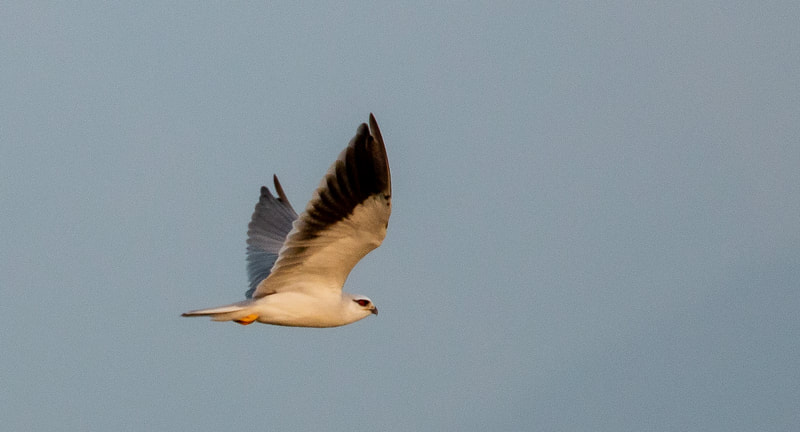
























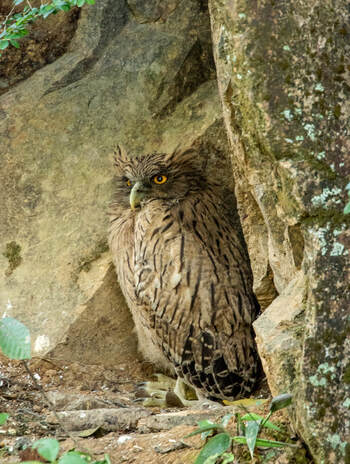






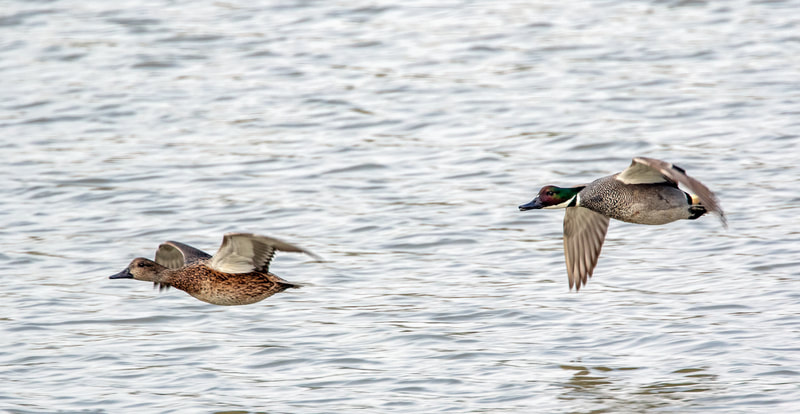









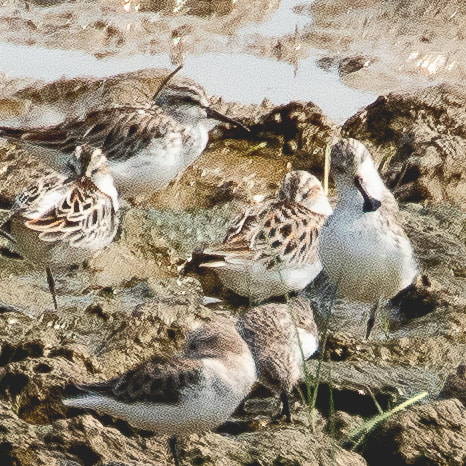








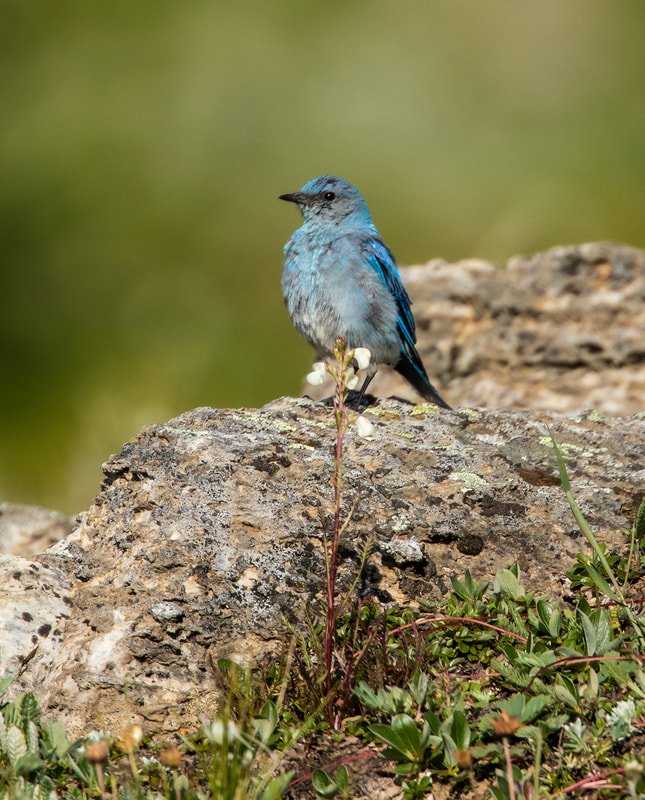




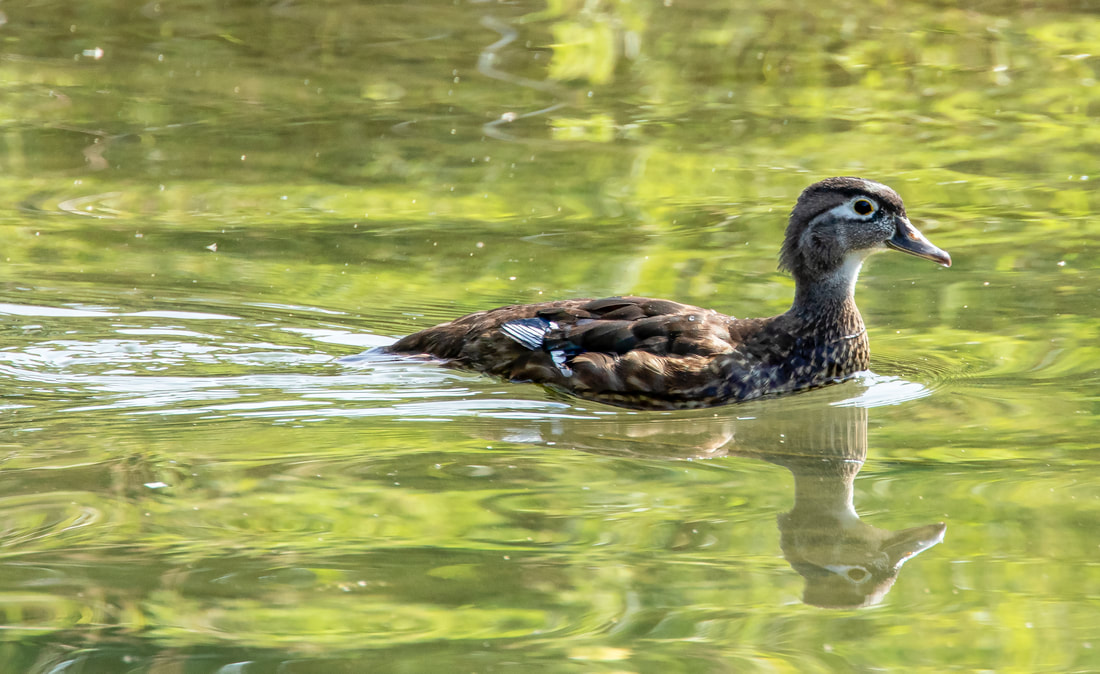


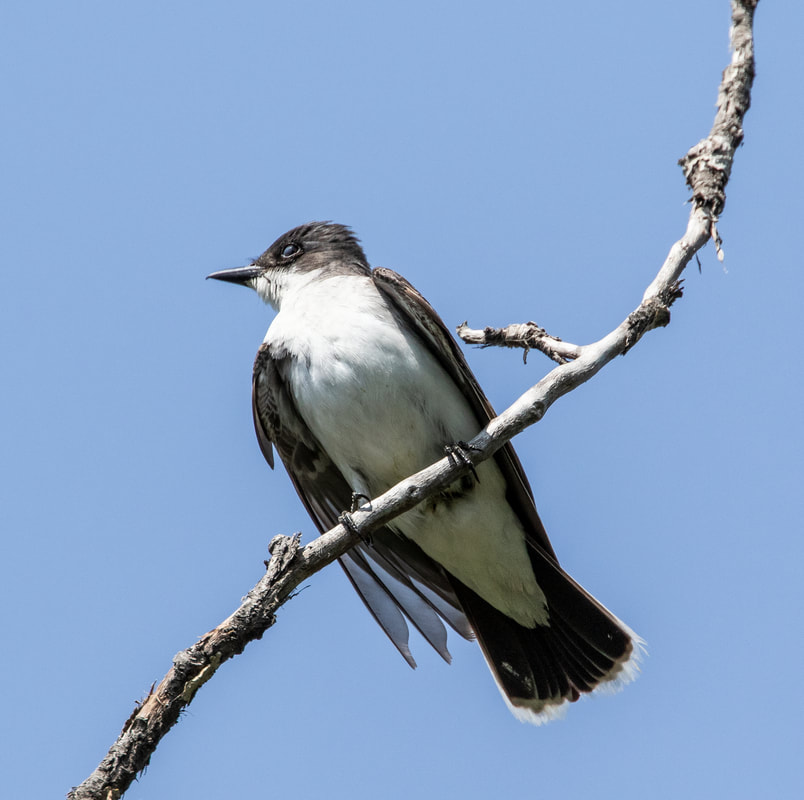










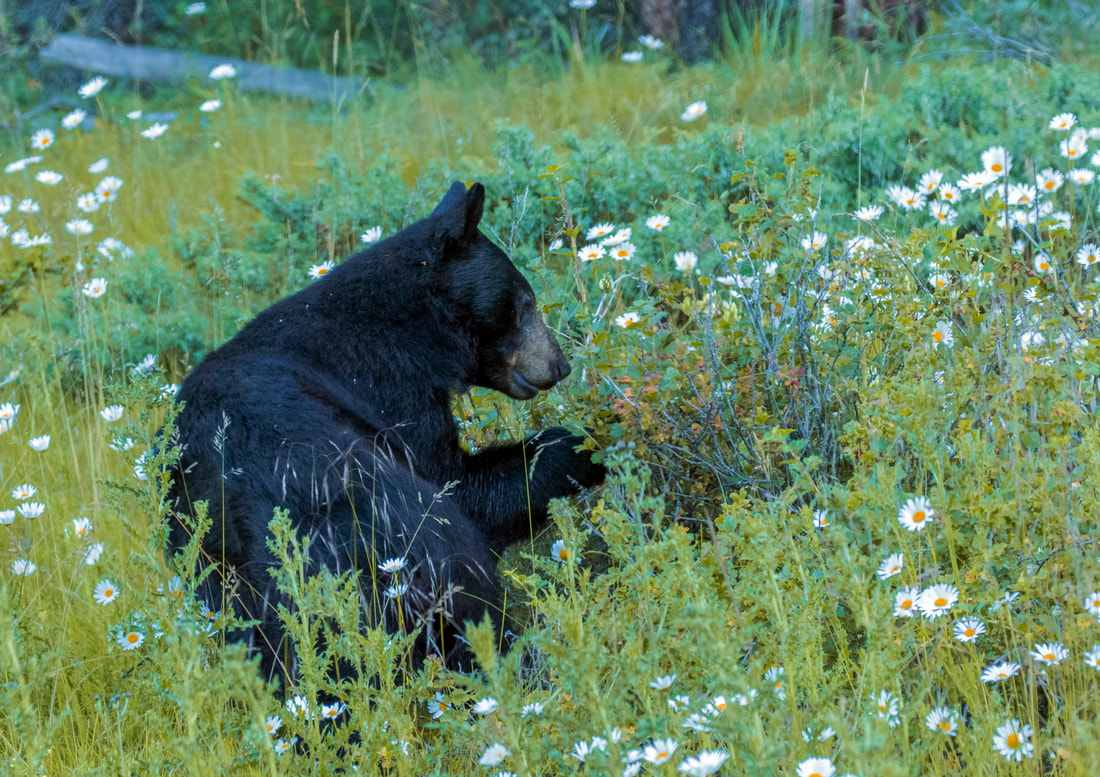



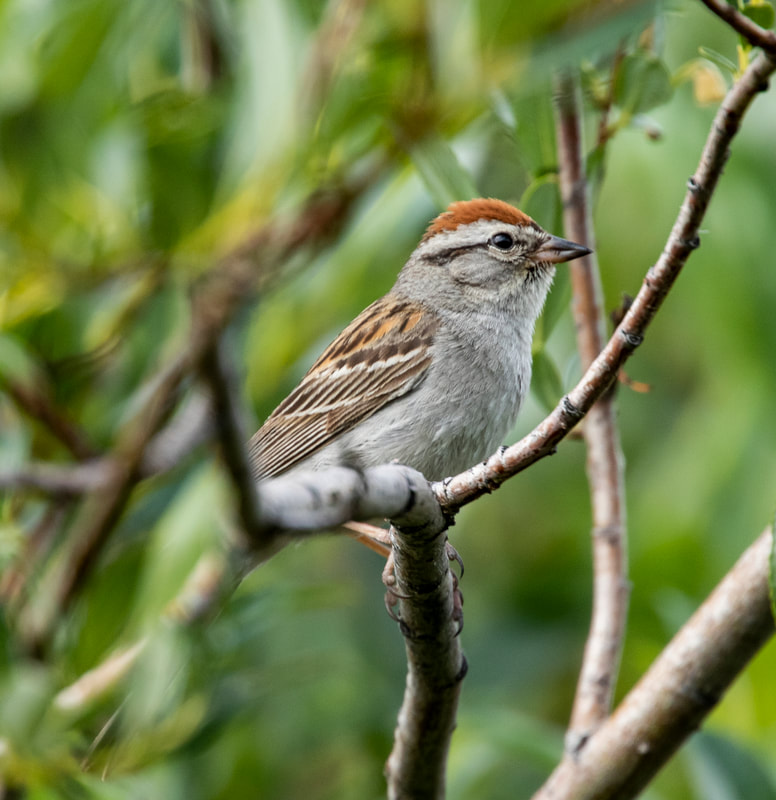
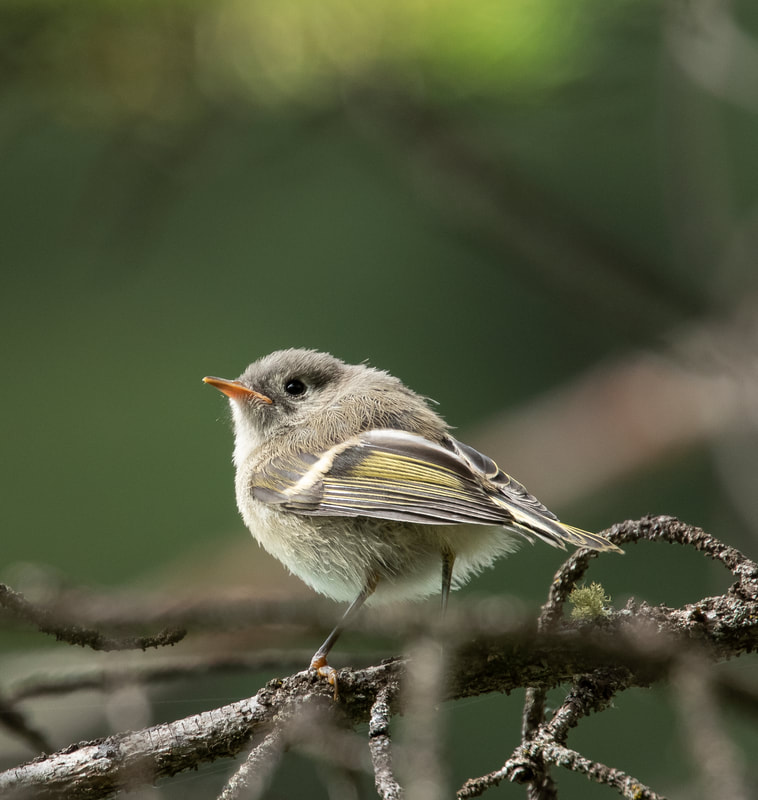

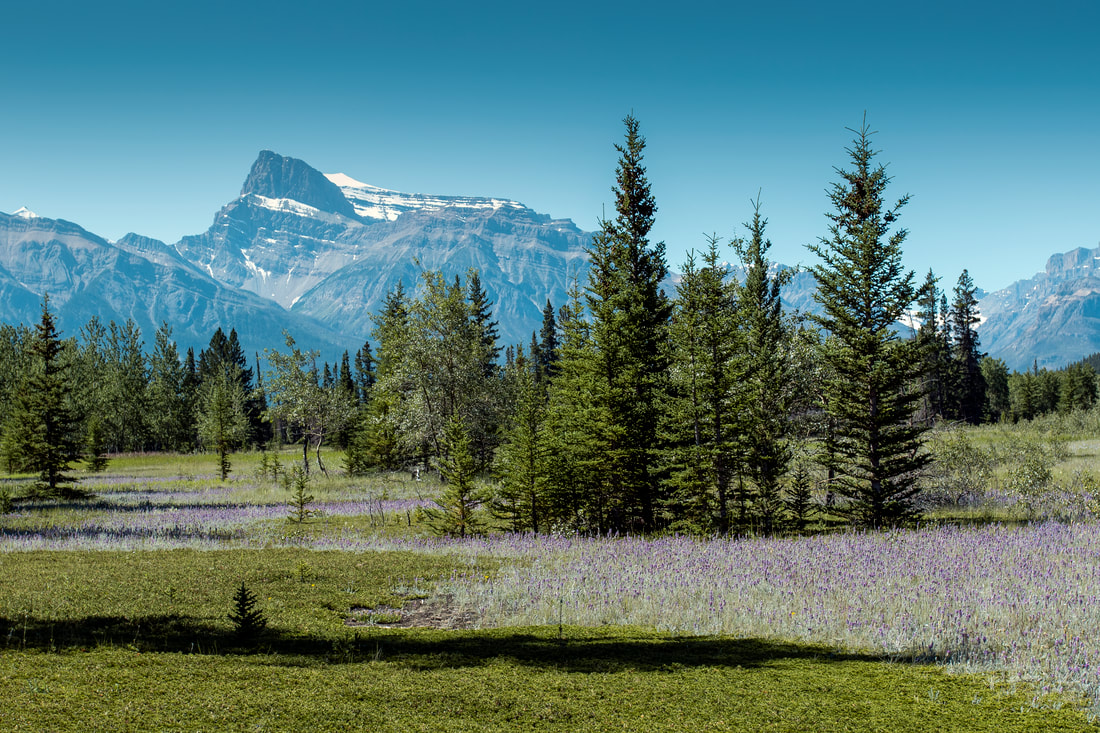
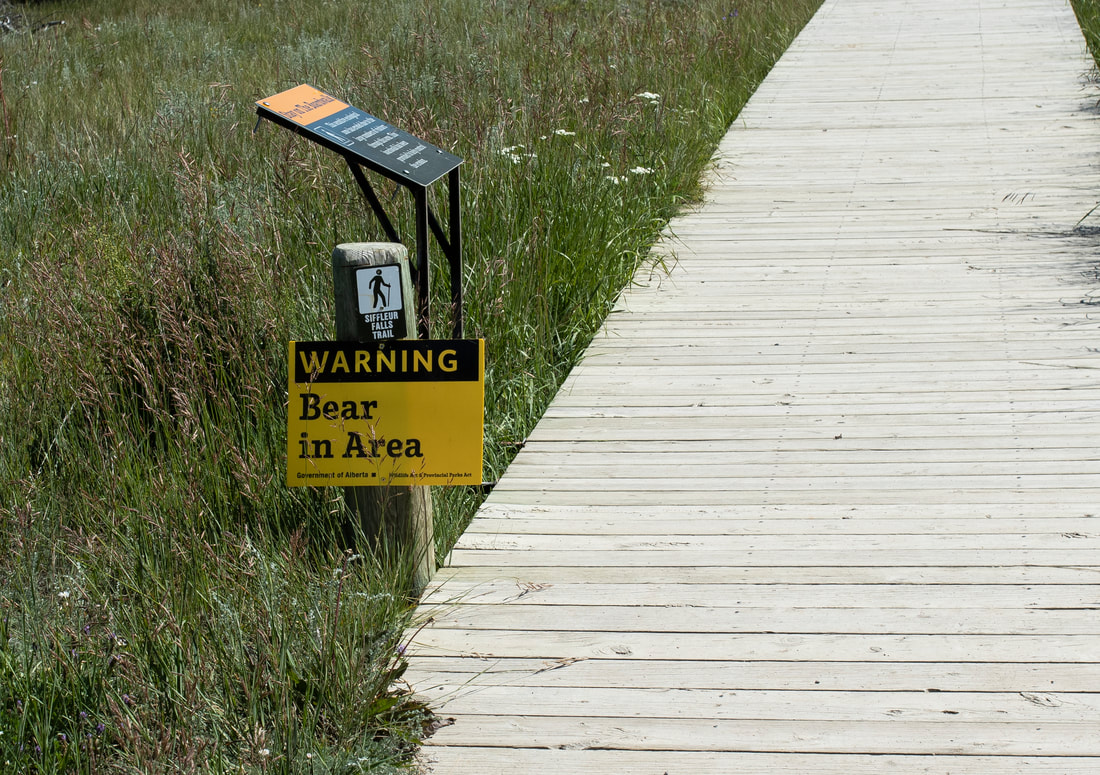















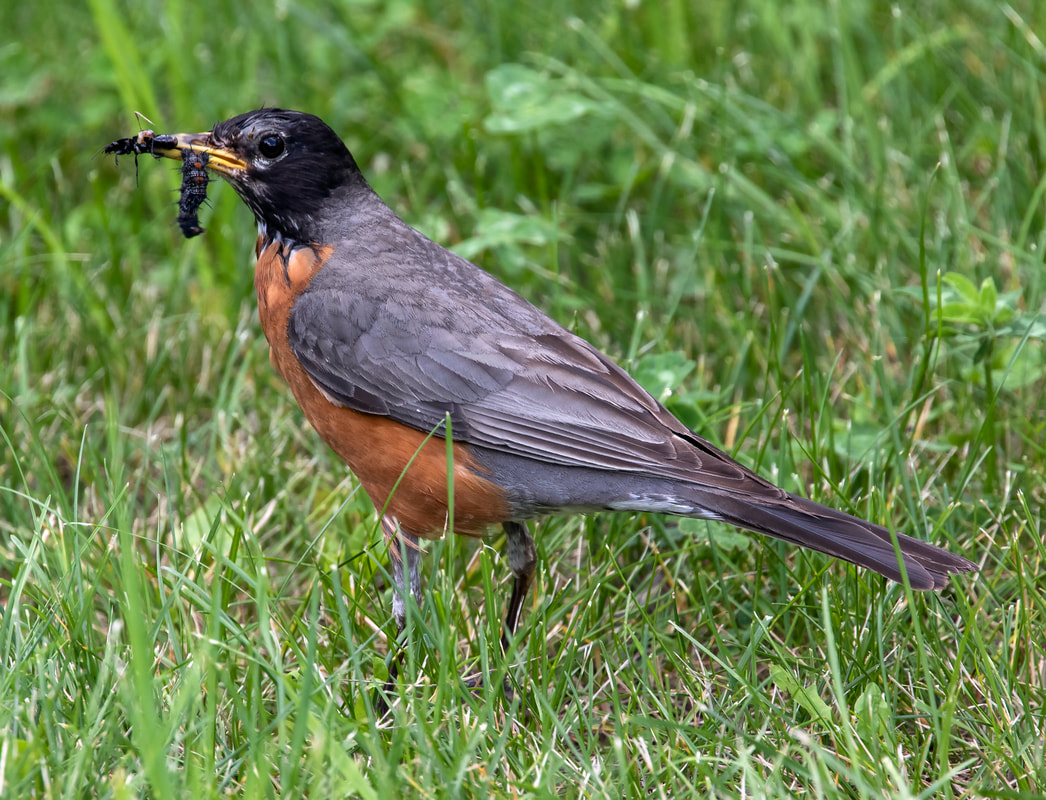























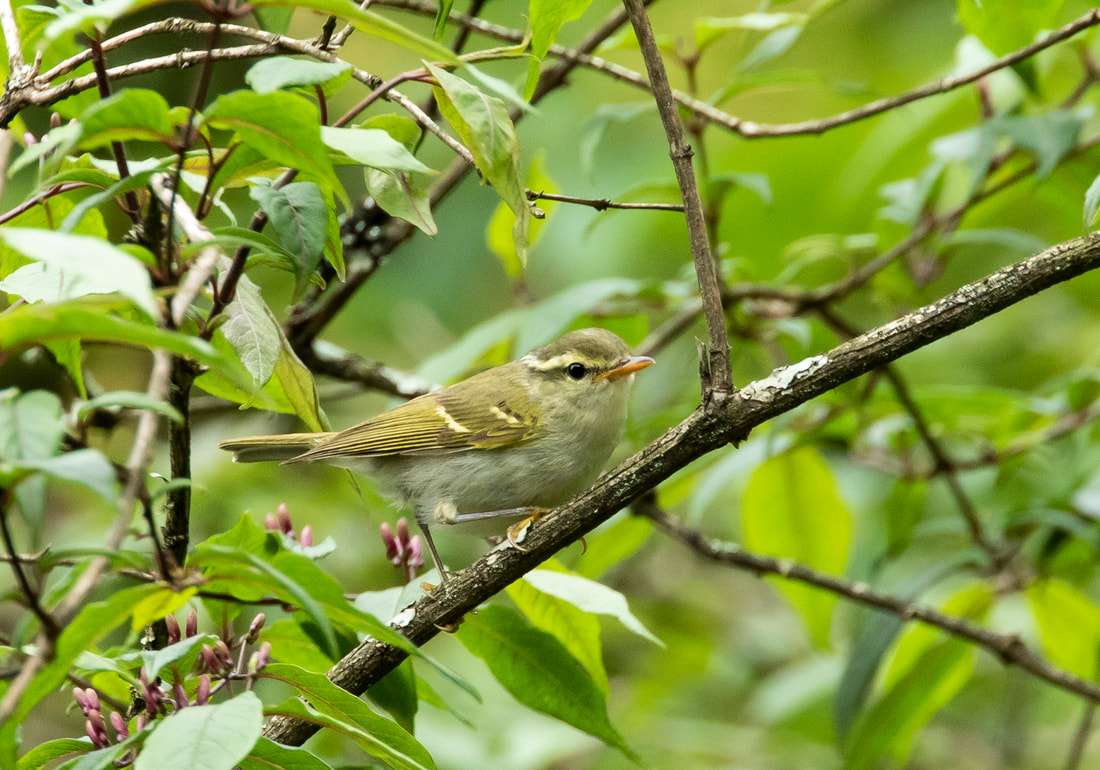
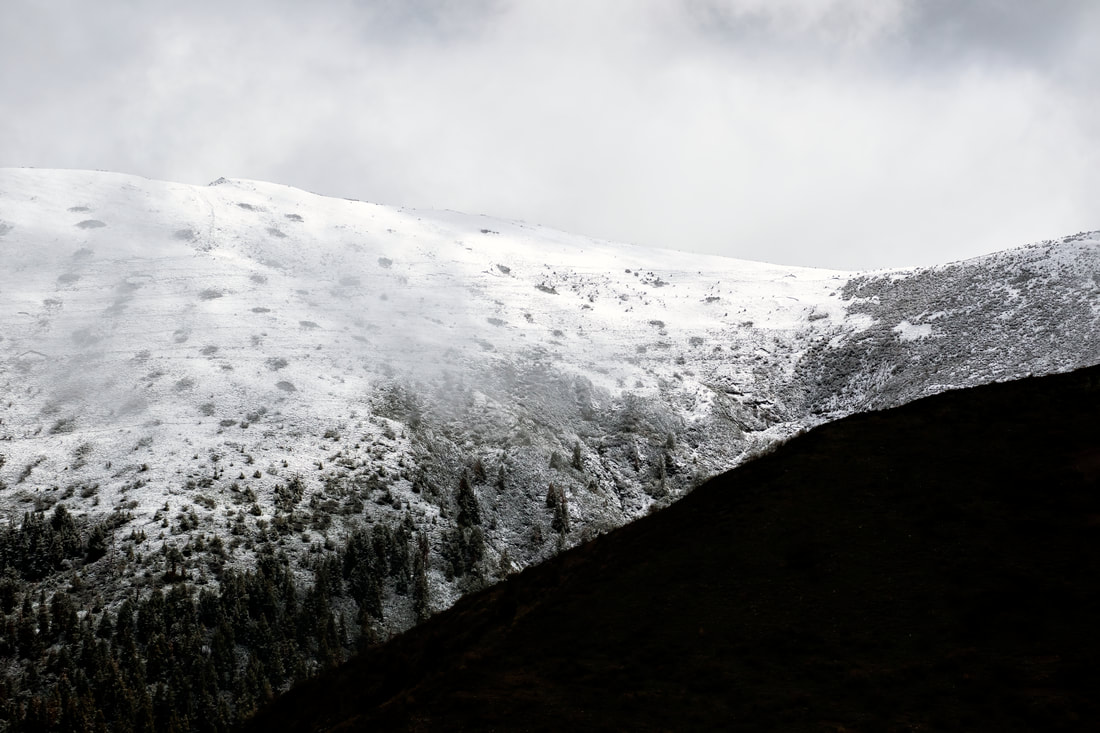


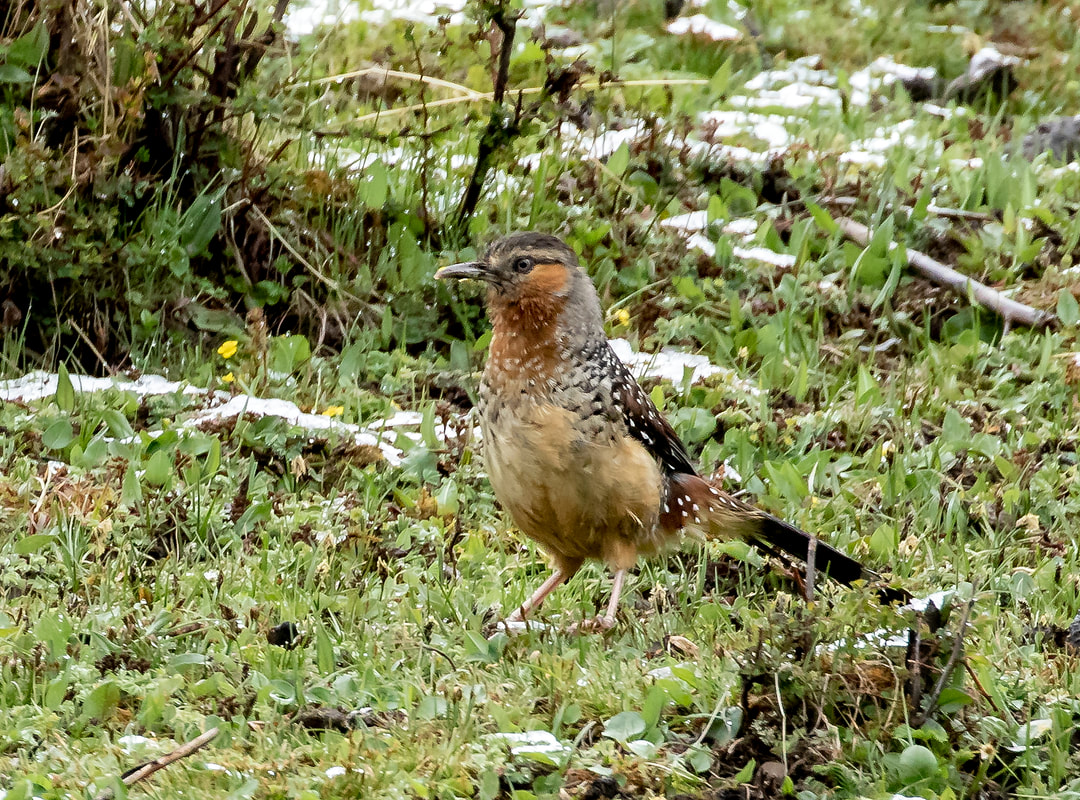
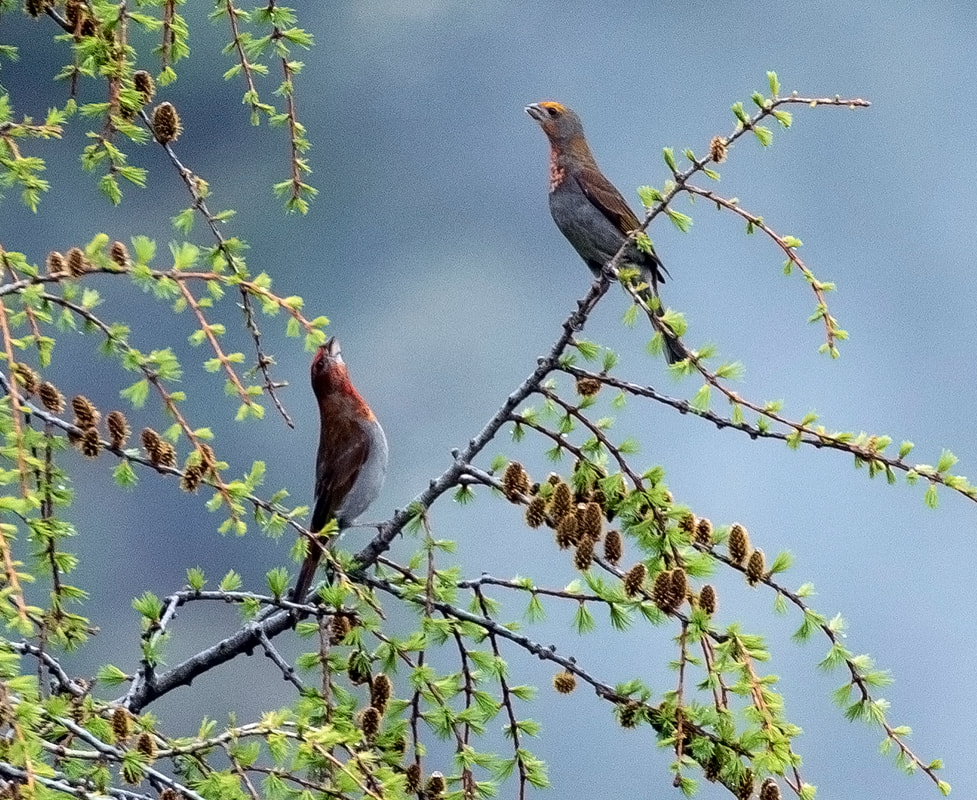




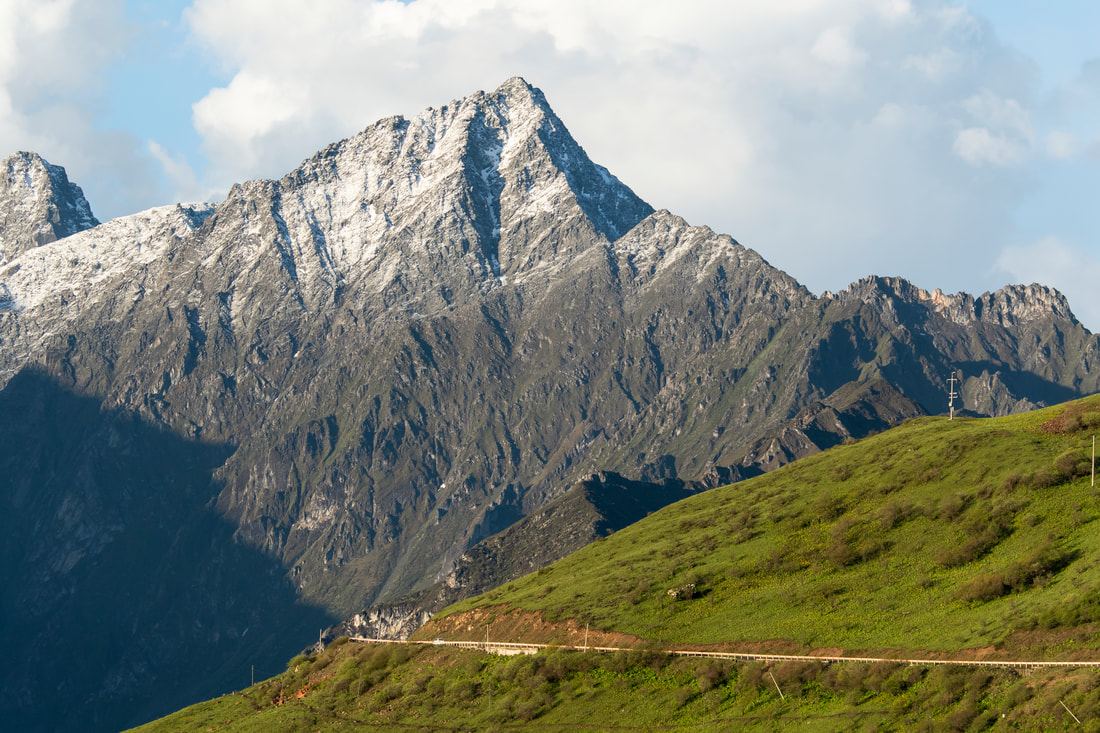
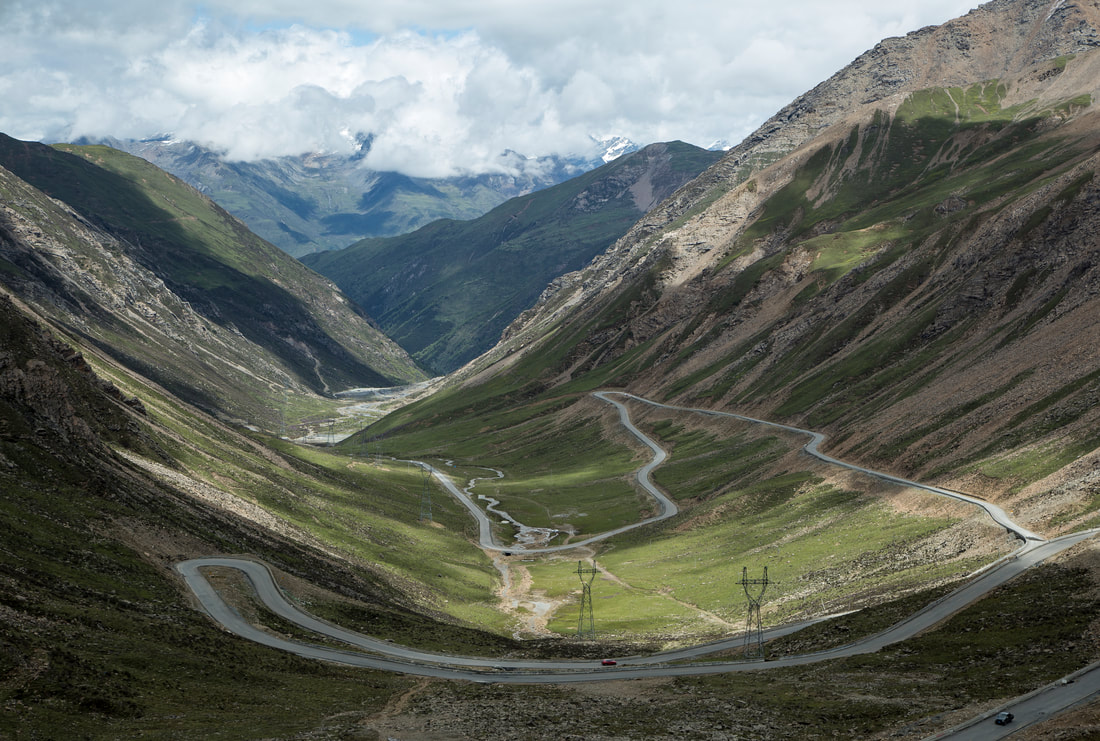








 RSS Feed
RSS Feed
